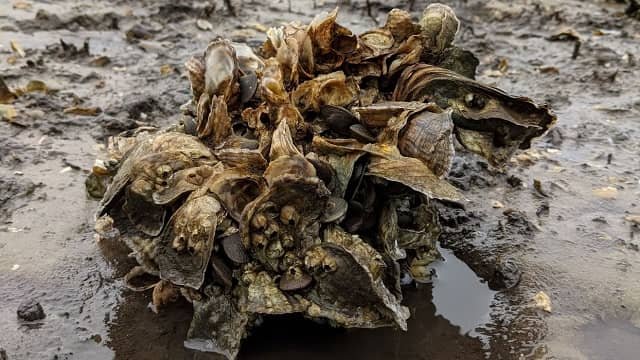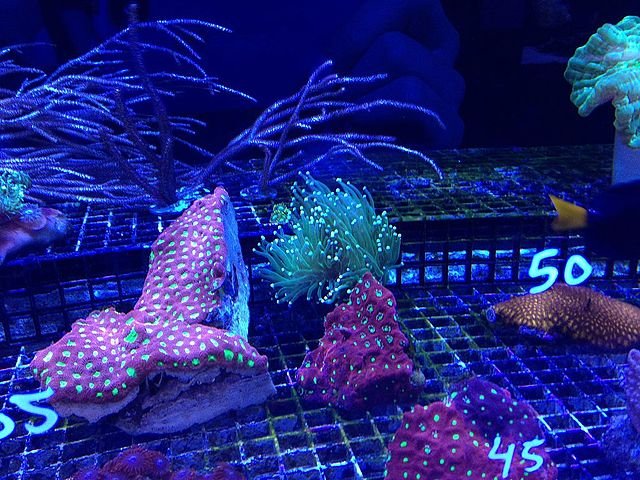
One of the main issues in the fish and seafood trade is the mislabeling of products. This scenario leads to economic losses and threatens public health.
To increase consumer confidence in bivalves and improve current legislation, tools are needed to combat product mislabeling and confirm the geographical origin of bivalves.
A team of researchers from ECOMARE & CESAM at the University of Aveiro published a scientific review providing an overview of traceability of geographical origin and detection of mislabeling in marine bivalve species.
They also identified current trends in the use of tools, highlighted countries contributing to the advancement of the state-of-the-art on these topics, and emphasized the bivalve groups/species that are most frequently studied.
Traceability of marine bivalves
Traceability of marine bivalves has become an essential requirement for sustainable management and conservation of bivalves and their derived products.
According to the study, traceability ensures product quality and is extremely important in minimizing food safety risks, as authorities can trace the origin of a contaminated product.
Additionally, traceability can certify the legal and sustainable origin of products, reduce illegal and unreported catches, and help combat food fraud.
Different approaches to traceability of bivalves
DNA analysis
Some analytical methods used for species identification and food authentication are based on DNA analysis, due to its high stability and presence in most biological tissues.
Most DNA-based methods involve specific amplification of one or more DNA fragments using the polymerase chain reaction (PCR).
Stay Always Informed
Join our communities to instantly receive the most important news, reports, and analysis from the aquaculture industry.
According to the study, DNA analysis is one of the most commonly used tools for species identification and the second most used for discriminating the geographical origin of bivalves.
The tool appears to be relatively fast and inexpensive; however, DNA is susceptible to degradation and does not allow differentiation of close geographical areas.
Fatty acid analysis
Fatty acids are the main constituents of triglycerides and polar lipids. The fatty acid profile in bivalves can be influenced by various intrinsic factors (e.g., age, sex, reproductive cycle, and phylogeny) and extrinsic factors (e.g., diet, temperature, depth, and salinity).
Extrinsic factors make fatty acids strong biomarkers of environmental conditions, particularly useful for traceability of geographical origin. The available diet for bivalves differs depending on the ecosystem they inhabit, affecting the composition of their fatty acid profile.
Fatty acid analysis typically employs chromatography or spectroscopy methods. This tool is relatively low-cost, although its performance is slower compared to others. Additionally, lipids are susceptible to oxidation.
Metabolomic analysis
Metabolomics enables the high-throughput detection of various metabolites in cells, tissues, and organisms (the metabolome), such as small peptides, oligonucleotides, sugars, organic acids, ketones, among others.
Metabolomic analyses can be classified as:
- Targeted: focusing on a specific group of metabolites, which often requires the identification and classification of all metabolites within the studied group.
- Untargeted: focusing on the detection (identification and quantification) of all possible metabolites to obtain a fingerprint.
Additionally, depending on the purpose of the analyses, this tool can also be classified as informative, discriminative, or predictive.
Elemental analysis
Bivalves are recognized as bioindicators of environmental quality in aquatic systems. These filter-feeding species have a natural tendency to accumulate metals in their tissues.
The accumulation of metals results in elemental “fingerprints” that accurately reflect the environmental conditions experienced by the bivalves up to the moment they are harvested.
Elemental analyses of bivalves have been used as a tool to trace their geographical origin.
Stable isotope analysis
Isotopes are atoms of an element that have the same number of protons but a different number of neutrons. Isotopes are classified as stable, which are not subject to any radioactive decay, or unstable.
Primary producers have distinct isotopic signatures, and when consumed by bivalves, their signature is assimilated into their tissues.
Stable isotope analysis has been used for over a decade to trace the geographical origin of bivalves.
Conclusion
According to the researchers, the most commonly used tools to uncover species mislabeling in marine bivalves are DNA analysis and fatty acid analysis, while elemental analysis is the most commonly employed approach to confirm their geographical origin.
They also highlight that stable and unstable isotope analysis, as well as metabolomics, are increasingly being used to verify the authenticity and provenance of species in marine bivalves.
Furthermore, they emphasize the need for further studies to identify annual/seasonal variations and determine if these can be a limitation for optimizing protocols to combat fraudulent practices. They recommend the implementation of a global open database that allows real-time data comparison.
The study was funded by the CITAQUA project, “Development of the Aveiro Hub Reinforcement Project (H4),” under Measure 10 of Investment TC-C10-i01 – Blue Hub – Network of Infrastructures for the Blue Economy, funded by the Recovery and Resilience Plan (PRR) and the Blue Fund of the Portuguese Government.
Reference (open access):
Andreia Santos, Fernando Ricardo, M. Rosário M. Domingues, Carla Patinha, Ricardo Calado. 2023. Current trends in the traceability of geographic origin and detection of species-mislabeling in marine bivalves, Food Control, Volume 152, 2023, 109840, ISSN 0956-7135, https://doi.org/10.1016/j.foodcont.2023.109840.
Editor at the digital magazine AquaHoy. He holds a degree in Aquaculture Biology from the National University of Santa (UNS) and a Master’s degree in Science and Innovation Management from the Polytechnic University of Valencia, with postgraduate diplomas in Business Innovation and Innovation Management. He possesses extensive experience in the aquaculture and fisheries sector, having led the Fisheries Innovation Unit of the National Program for Innovation in Fisheries and Aquaculture (PNIPA). He has served as a senior consultant in technology watch, an innovation project formulator and advisor, and a lecturer at UNS. He is a member of the Peruvian College of Biologists and was recognized by the World Aquaculture Society (WAS) in 2016 for his contribution to aquaculture.




